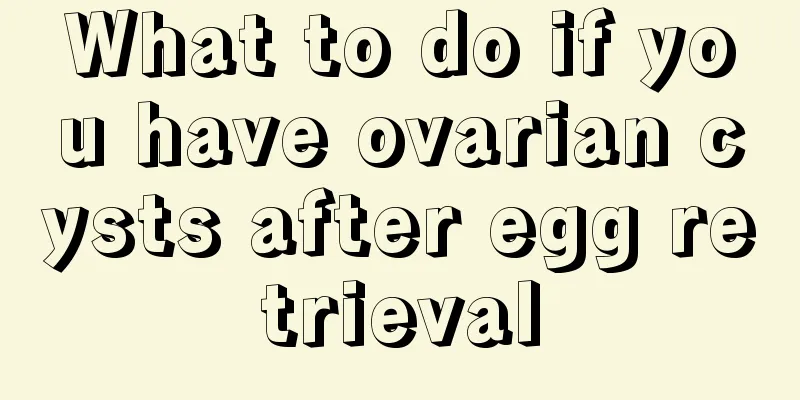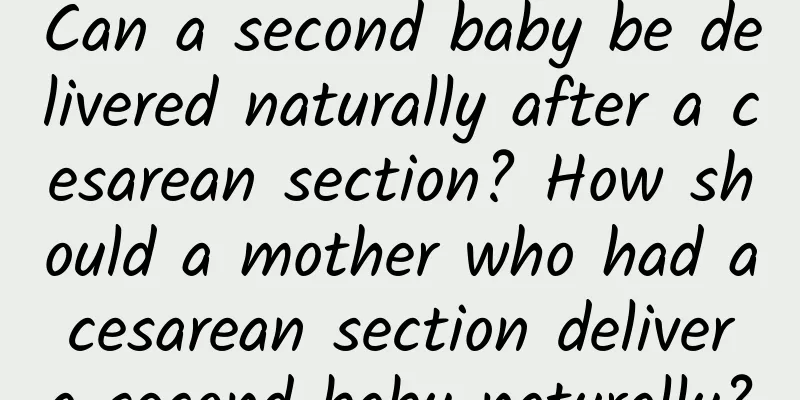What to do if you have ovarian cysts after egg retrieval

|
Ovarian cysts after egg retrieval are a very common disease in daily life. It not only causes great harm to the patient's physical health, but also seriously affects their normal life and work. People need to seek medical treatment in time when they find related symptoms and choose appropriate treatment methods according to their physical condition to recover health as soon as possible. Symptoms of ovarian cysts 1. Physiological ovarian cyst Physiological cysts may disappear on their own with the cyclical changes of the ovaries. Under normal circumstances, the ovaries are solid tissues. In rare cases, follicular cysts and corpus luteum cysts grow too rapidly, causing the ovarian tissue to be pulled and rupture and bleed. Because this blood has no outlet, it is wrapped in the ovary and forms a hematoma. But whether it is a cyst or a hematoma, it can gradually shrink and disappear on its own within a few months. 2. Pathological ovarian cysts If an ovarian cyst does not shrink or even increases in size (greater than 6 cm in diameter) during follow-up, or if the cyst occurs in prepubertal girls or postmenopausal women, the possibility of an ovarian tumor should be suspected, and further auxiliary examinations or even surgery are often required for diagnosis and treatment. Ovarian tumors often cause dysmenorrhea, menstrual disorders, sexual pain and other symptoms, and even lead to infertility. 3 The ovaries are important organs for ovulation and secretion of gonadal hormones. Ovarian tumors often occur during the reproductive age. Clinically, the basic pathophysiological change in many patients with ovarian cysts and polycystic ovary syndrome is that the ovaries produce too much androgen, and the excessive production of androgen is the result of the synergistic effect of abnormal functions of multiple endocrine systems in the body. 4 Symptoms of ovarian cysts 1. Physiological ovarian cyst Physiological cysts may disappear on their own with the cyclical changes of the ovaries. Under normal circumstances, the ovaries are solid tissues. In rare cases, follicular cysts and corpus luteum cysts grow too rapidly, causing the ovarian tissue to be pulled and rupture and bleed. Because this blood has no outlet, it is wrapped in the ovary and forms a hematoma. But whether it is a cyst or a hematoma, it can gradually shrink and disappear on its own within a few months. 2. Pathological ovarian cyst If an ovarian cyst does not shrink or even increases in size (greater than 6 cm in diameter) during follow-up, or if the cyst occurs in prepubertal girls and postmenopausal women, the possibility of an ovarian tumor should be suspected, and further auxiliary examinations or even surgery are often required for diagnosis and treatment. Ovarian tumors often cause dysmenorrhea, menstrual disorders, sexual pain and other symptoms, and even lead to infertility. |
<<: Can women with polycystic ovaries get pregnant?
>>: What is the cause of the stabbing pain in the breast?
Recommend
How long after a normal birth is it best to have sex?
We all know that women will lose a lot of qi and ...
Green tea is cooling, not hot? What are the benefits of drinking green tea for men?
For people who have been working in the computer ...
Can I have sex during my menstrual period?
Nowadays, many couples face many problems when it...
How to reduce the belly
Most women don't like men with big bellies, a...
Will uterine cold affect follicle development?
It is common for girls to have a cold uterus nowa...
Is it good to drink milk during menstruation?
Women's menstruation is a normal physiologica...
Can I have sex after the biochemical test?
Don't rush to have sex after the biochemical ...
Why is liver cancer late stage and silent? What is the key to early detection?
Liver cancer is a ferocious tumor that can cause ...
Why do I urinate frequently before my period?
Under normal circumstances, we women go to the ba...
What can I eat to make my breasts bigger?
Every girl hopes to have an S-shaped body, beauti...
What are the benefits of drinking milk for women?
As we all know, milk is a nutritious and protein-...
Why does vaginal pain occur after sex?
There are always many situations in life where se...
Why are my labia getting bigger?
If you observe closely some married women, you wi...
What is the best medicine for breast cysts?
Breast cysts are a common gynecological disease. ...
How many fingers open when the labor pain lasts 3 minutes
Judging from the time, if the contractions occur ...









